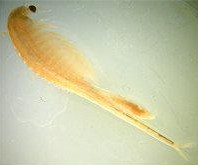
The International Union for Conservation of Nature (IUCN) is an international organization working in the field of nature conservation and sustainable use of natural resources. It is involved in data gathering and analysis, research, field projects, advocacy, and education. IUCN's mission is to "influence, encourage and assist societies throughout the world to conserve nature and to ensure that any use of natural resources is equitable and ecologically sustainable".

Conservation in Australia is an issue of state and federal policy. Australia is one of the most biologically diverse countries in the world, with a large portion of species endemic to Australia. Preserving this wealth of biodiversity is important for future generations. 25% of Australia is managed for conservation.

The Nature Conservancy (TNC) is a global environmental organization headquartered in Arlington, Virginia. As of 2021, it works via affiliates or branches in 79 countries and territories, as well as across every state in the US.

The NatureServe conservation status system, maintained and presented by NatureServe in cooperation with the Natural Heritage Network, was developed in the United States in the 1980s by The Nature Conservancy (TNC) as a means for ranking or categorizing the relative imperilment of species of plants, animals, or other organisms, as well as natural ecological communities, on the global, national or subnational levels. These designations are also referred to as NatureServe ranks, NatureServe statuses, or Natural Heritage ranks. While the Nature Conservancy is no longer substantially involved in the maintenance of these ranks, the name TNC ranks is still sometimes encountered for them.

The conservation status of a group of organisms indicates whether the group still exists and how likely the group is to become extinct in the near future. Many factors are taken into account when assessing conservation status: not simply the number of individuals remaining, but the overall increase or decrease in the population over time, breeding success rates, and known threats. Various systems of conservation status are in use at international, multi-country, national and local levels, as well as for consumer use such as sustainable seafood advisory lists and certification. The two international systems are by the International Union for Conservation of Nature (IUCN) and The Convention on International Trade in Endangered Species of Wild Fauna and Flora (CITES).
Natural heritage refers to the sum total of the elements of biodiversity, including flora and fauna, ecosystems and geological structures. It forms part of our natural resources.

Papua New Guinea together with the West Papua region of Indonesia make up a major tropical wilderness area that still contains 5% of the original and untouched tropical high-biodiversity terrestrial ecosystems. PNG in itself contains over 5% of the world's biodiversity in less than 1% of the world's total land area. The flora of New Guinea is unique because it has two sources of origin; the Gondwana flora from the south and flora with Asian origin from the west. As a result, New Guinea shares major family and genera with Australia and the East Asia, but is rich in local endemic species. The endemicity is a result of mountainous isolation, topographic and soil habitat heterogeneity, high forest disturbance rates and abundant aseasonal rainfall year round. PNG boasts some 15–21,000 higher plants, 3,000 species of orchids, 800 species of coral, 600 species of fish, 250 species of mammals and 760 species of birds and 8 species of tree-kangaroos out of which 84 genera of animals are endemic. Ecosystems range from lowland forests to montane forests, alpine flora down to coastal areas which contains some of the most extensive pristine mangrove areas in the world. Much of this biodiversity has remained intact for thousands of years because the ruggedness of the terrain made the interior lands inaccessible; furthermore low population density and restrictions on the effectiveness of traditional tools, ensured that these biodiversity was never overexploited.

Namibia is one of few countries in the world to specifically address habitat conservation and protection of natural resources in their constitution. Article 95 states, "The State shall actively promote and maintain the welfare of the people by adopting international policies aimed at the following: maintenance of ecosystems, essential ecological processes, and biological diversity of Namibia, and utilization of living natural resources on a sustainable basis for the benefit of all Namibians, both present and future.".

The oldfield mouse, oldfield deermouse or beach mouse is a nocturnal species of rodent in the family Cricetidae that primarily eats seeds. It lives in holes throughout the Southeastern United States in beaches and sandy fields. Predators to these mice include birds and mammals. In 2016, these mice were in the least concern category on the IUCN Red List with certain subspecies classified as extinct, critically endangered, endangered or near threatened.

The conservancy fairy shrimp is an endangered small crustacean in the family Branchinectidae. It ranges in size from about 1.25 centimetres (0.49 in) to 2.5 centimetres (0.98 in) long. This species is endemic to California in the United States.
The Conservation Geoportal was an online geoportal, intended to provide a comprehensive listing of geographic information systems (GIS) datasets and web map service relevant to biodiversity conservation. It is currently defunct. The site, its contents and functionality were free for anyone to use and contribute to. The Conservation Geoportal was launched on June 28, 2006 at the joint Society for Conservation Biology and Society for Conservation GIS Conference in San Jose, California, USA. As of October 2007, it included metadata for over 3,667 GIS records.
The ASEAN Wildlife Enforcement Network (ASEAN-WEN) was officially launched on 1 December 2005, as a regional inter-agency and inter-governmental initiative to counter the illegal cross-border trade in endangered flora and fauna. It helps countries share information on and tackle cross-border wildlife crime and facilitates the exchange of regional best practices in combating those crimes. As the world's largest wildlife law enforcement network, it comprises the law enforcement agencies of the 10 ASEAN countries forming a regional intergovernmental law-enforcement network.
Tundi Agardy is a marine conservationist and the founder of Sound Seas – a Washington DC-based group specializing in working at the nexus of marine science and policy in order to safeguard ocean life.

This is a list of topics in biodiversity.
Allium elmendorfii is a species of wild onion endemic to Texas. It is known only from Bexar, Frio, Wilson, and Atascosa Counties. It is generally found on sandy soils, specifically "well-drained sands, Eocene, Pleistocene and Holocene sands, and has only a 400 x 160 km range." Its habitat is "Forest/Woodland, Savanna, Woodland - Hardwood" and specifically "{g}rassland openings in post oak woodlands on deep, well-drained sands derived from Queen City and similar Eocene formations."
Steve McCormick is the former president of The Gordon and Betty Moore Foundation (2007–2014) and the former president and CEO of The Nature Conservancy (2000–2007). In May 2014, Gordon Moore announced that McCormick was leaving the Moore Foundation to co-found a startup to create the first global, open-source database on ecosystem services and natural capital, called The Earth Genome. McCormick is a board member for many social impact and environmental organizations.
The Science for Nature and People Partnership (SNAPP) is an initiative that aims to rapidly develop models that will underpin the next phase of nature conservation and sustainable development. It works with public, voluntary and private sector organizations around the world to transform the relationship between people and nature.









